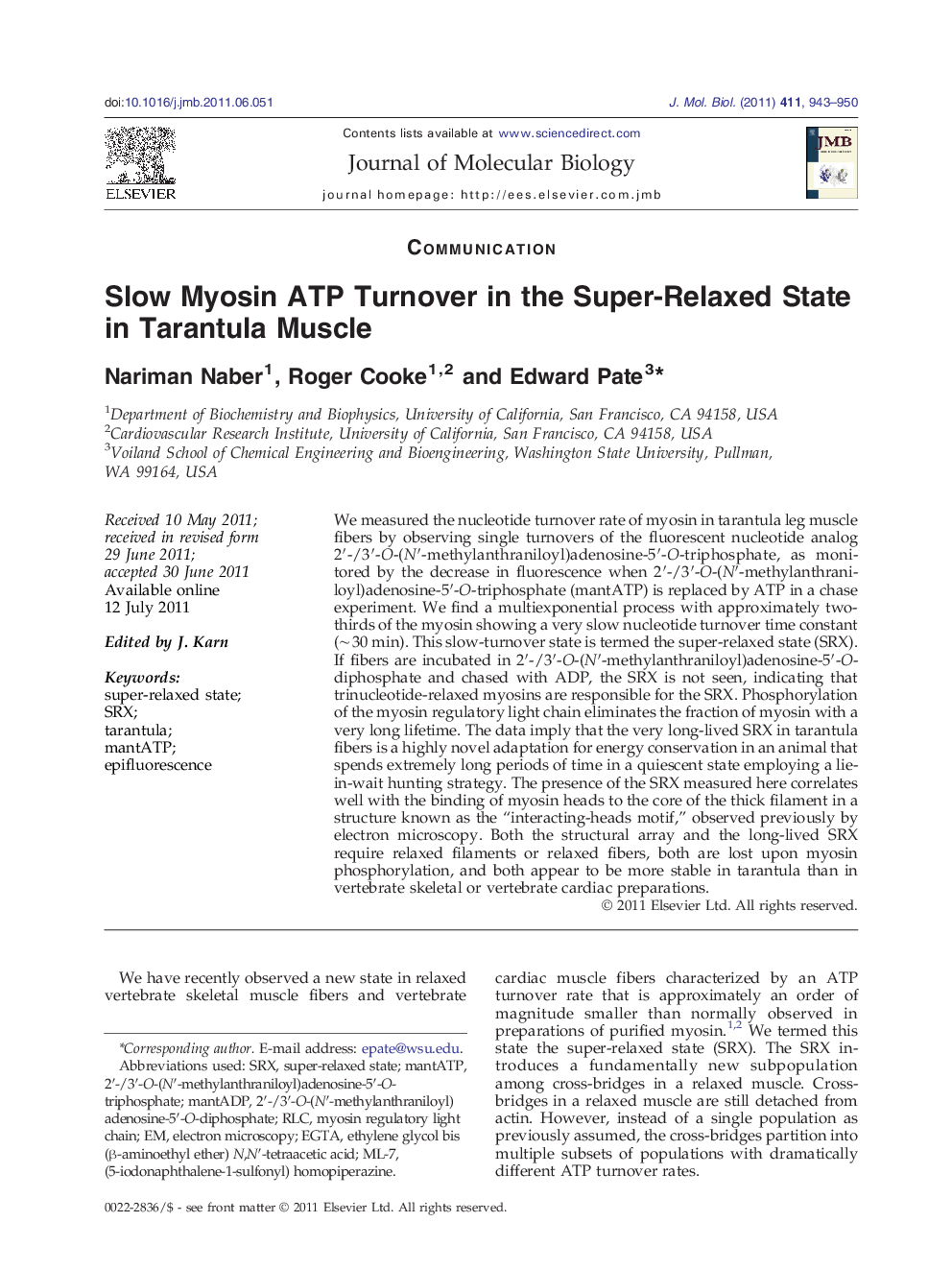| کد مقاله | کد نشریه | سال انتشار | مقاله انگلیسی | نسخه تمام متن |
|---|---|---|---|---|
| 2185032 | 1095957 | 2011 | 8 صفحه PDF | دانلود رایگان |

We measured the nucleotide turnover rate of myosin in tarantula leg muscle fibers by observing single turnovers of the fluorescent nucleotide analog 2′-/3′-O-(N′-methylanthraniloyl)adenosine-5′-O-triphosphate, as monitored by the decrease in fluorescence when 2′-/3′-O-(N′-methylanthraniloyl)adenosine-5′-O-triphosphate (mantATP) is replaced by ATP in a chase experiment. We find a multiexponential process with approximately two-thirds of the myosin showing a very slow nucleotide turnover time constant (∼ 30 min). This slow-turnover state is termed the super-relaxed state (SRX). If fibers are incubated in 2′-/3′-O-(N′-methylanthraniloyl)adenosine-5′-O-diphosphate and chased with ADP, the SRX is not seen, indicating that trinucleotide-relaxed myosins are responsible for the SRX. Phosphorylation of the myosin regulatory light chain eliminates the fraction of myosin with a very long lifetime. The data imply that the very long-lived SRX in tarantula fibers is a highly novel adaptation for energy conservation in an animal that spends extremely long periods of time in a quiescent state employing a lie-in-wait hunting strategy. The presence of the SRX measured here correlates well with the binding of myosin heads to the core of the thick filament in a structure known as the “interacting-heads motif,” observed previously by electron microscopy. Both the structural array and the long-lived SRX require relaxed filaments or relaxed fibers, both are lost upon myosin phosphorylation, and both appear to be more stable in tarantula than in vertebrate skeletal or vertebrate cardiac preparations.
Graphical AbstractFigure optionsDownload high-quality image (201 K)Download as PowerPoint slideResearch Highlights
► We have observed an SRX in resting tarantula leg muscle.
► The SRX is characterized by an extremely slow ATP turnover rate (33 min).
► Phosphorylation of the myosin regulatory light chain dramatically decreases the SRX lifetime (5 min).
► We have observed the SRX in four muscle types, implying that it is a fundamental property of the relaxed state.
► The SRX appears related to the ordered helical array of myosin heads seen in tarantula muscle electron microscopy.
Journal: Journal of Molecular Biology - Volume 411, Issue 5, 2 September 2011, Pages 943–950